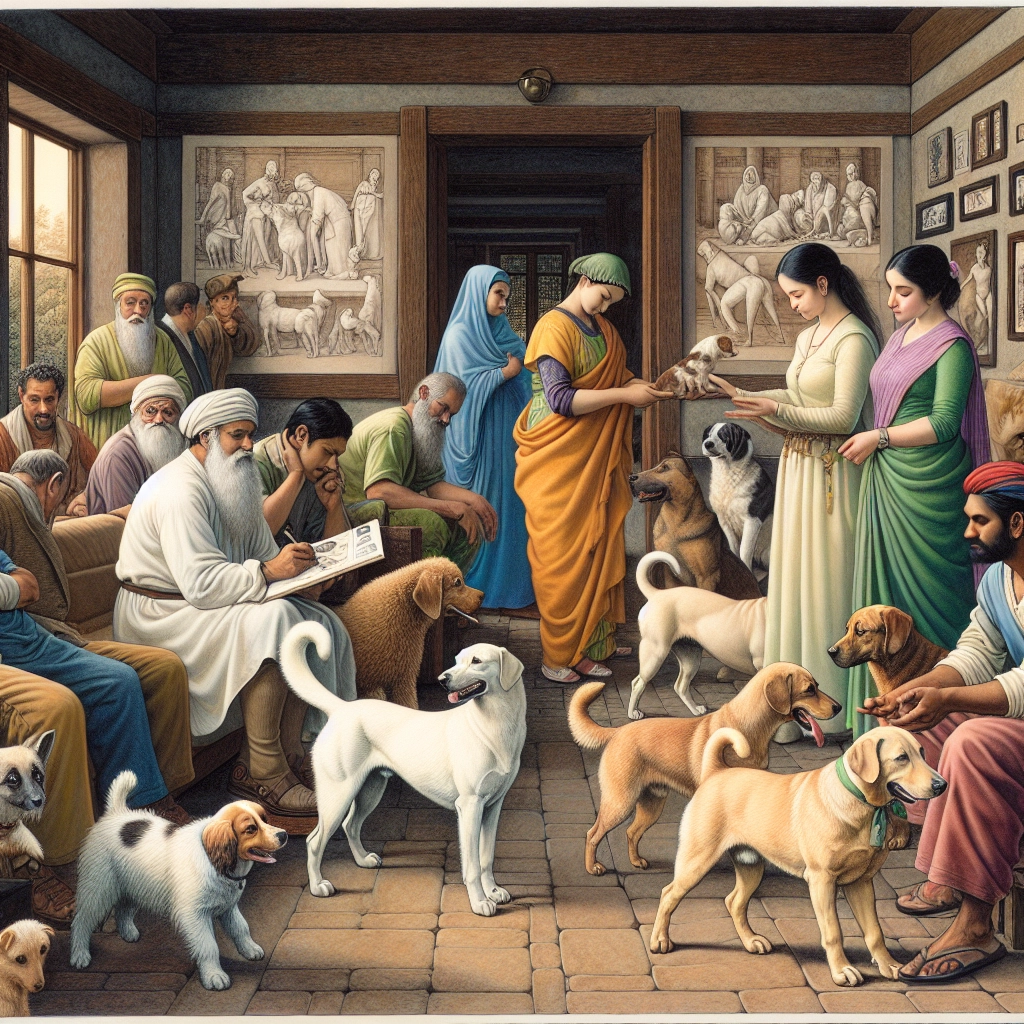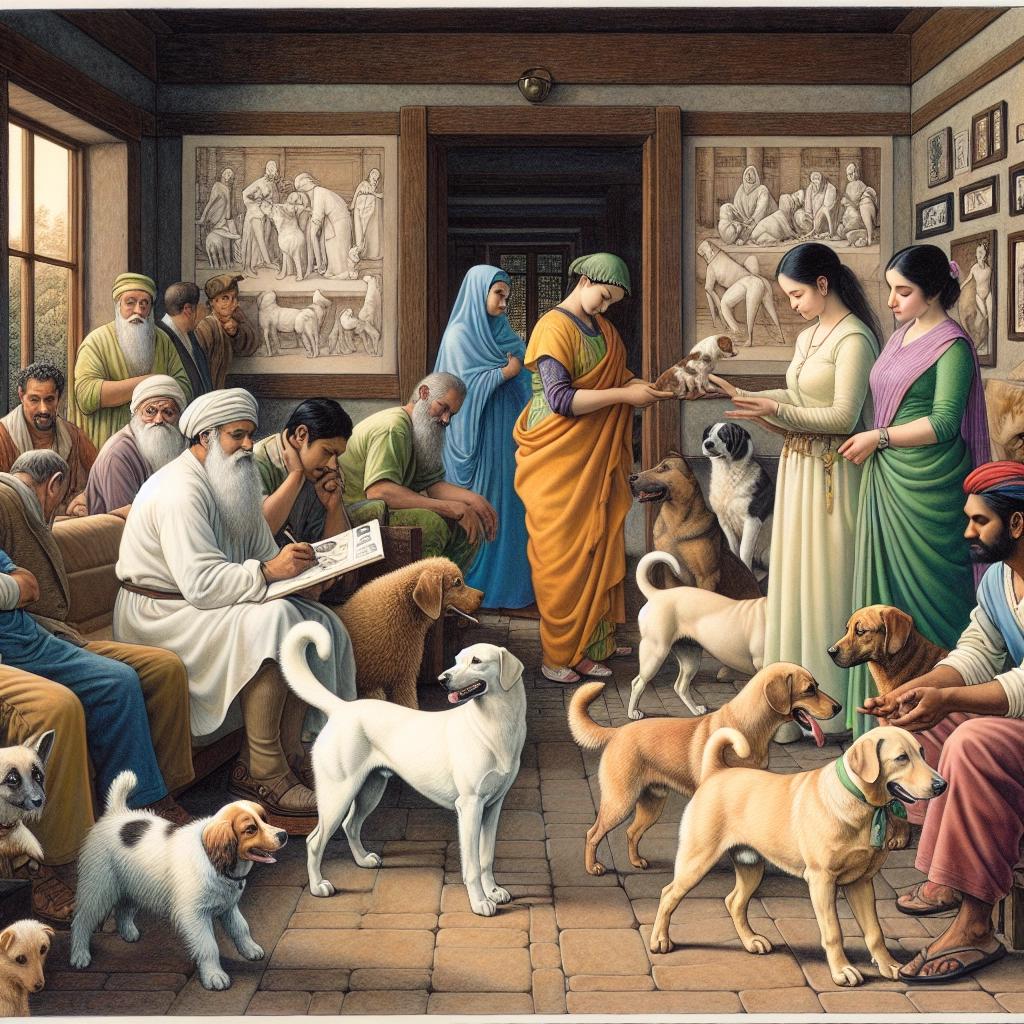The Tail-Wagging Truth: Decoding the Language of Dogs
 Quantum Cyber Solutions
Quantum Cyber Solutions

Published on
Friday, May 29, 2020
The Tail-Wagging Truth: Decoding the Language of Dogs
=========================================================
Authors

Name
Eric deQuevedo 😄
Twitter
🐶 The Wag of a Tail: A Window into a Dog's Soul 🐶
If you've ever had the joy of being around a dog, you've likely witnessed the enchanting sight of a wagging tail. This simple action has the power to melt hearts and bring smiles to faces, but have you ever stopped to consider what a wagging tail actually means? Is it always a sign of happiness, or could there be more to this familiar behavior? In this blog post, we'll explore the tail-wagging truth and decode the complex language of dogs.
🎭 The Many Faces of a Wagging Tail: Happiness, Nervousness, and Beyond 🎭
While a wagging tail is often associated with a happy, friendly dog, the reality is that this behavior can convey a wide range of emotions and intentions. The key to understanding a dog's tail language lies in observing the position, speed, and context of the wag.
Happiness and Excitement: A broad, sweeping tail wag that involves the dog's whole body is often a sign of pure joy and enthusiasm. This type of wag is commonly seen when a dog greets their beloved human or engages in playtime.
Nervousness or Uncertainty: A low, quick tail wag can indicate that a dog is feeling nervous, anxious, or uncertain about a situation. This type of wag may be accompanied by other appeasement gestures, such as lip licking or averting eye contact.
Alertness and Curiosity: A horizontal tail wag, often with a slight upward curve, can signal that a dog is alert and curious about their surroundings. This wag may be seen when a dog encounters a new sight, sound, or smell.
Aggression or Dominance: A high, stiff tail wag, sometimes with only the tip of the tail moving, can be a sign of aggression or dominance. This type of wag is often accompanied by other threatening body language, such as a tense posture or bared teeth.
It's important to remember that a dog's tail language should always be interpreted in the context of their overall body language and the situation at hand.
🧠 The Science Behind the Wag: Neurotransmitters and Emotions 🧠
So, what's really going on inside a dog's brain when they wag their tail? The answer lies in the complex interplay of neurotransmitters and emotions.
When a dog experiences positive emotions, such as happiness or excitement, their brain releases neurotransmitters like dopamine and serotonin. These chemicals play a crucial role in regulating mood and promoting feelings of well-being.
As these neurotransmitters flood the dog's system, they trigger physical responses, including the contraction of muscles in the tail. The result is the familiar sight of a wagging tail, which serves as an outward expression of the dog's internal emotional state.
🌈 The Evolution of Tail Wagging: A Social Survival Skill 🌈
From an evolutionary perspective, tail wagging is believed to have developed as a crucial social survival skill for dogs and their ancestors. In the wild, canids (dogs, wolves, and foxes) use their tails to communicate a variety of messages to their packmates and other animals.
A wagging tail can serve to:
Convey Friendly Intentions: A loose, relaxed tail wag can signal to other dogs that the individual is approachable and non-threatening, helping to diffuse potential conflicts and promote social bonding.
Express Submission: A low, rapid tail wag can be a sign of submission, indicating that the dog recognizes and respects the dominance of another individual. This behavior helps to maintain social harmony within the pack hierarchy.
Attract Attention: A high, flagging tail wag can serve to attract attention and rally other pack members for activities like hunting or play.
As dogs evolved alongside humans, their tail-wagging behavior became an essential part of their communication repertoire, allowing them to express their emotions and intentions to their human companions.
🔍 Decoding the Directional Wag: Left, Right, and the Emotional Divide 🔍
Recent research has revealed an intriguing aspect of canine tail wagging: the direction of the wag may hold clues to the dog's emotional state.
Studies have shown that dogs tend to wag their tails more to the right side of their body when they experience positive emotions, such as happiness or excitement. Conversely, tail wags that are biased towards the left side of the body may indicate negative emotions, such as fear or anxiety.
This directional wagging is believed to be linked to the asymmetry of the dog's brain, with the left hemisphere controlling positive emotions and the right hemisphere controlling negative emotions. By observing the direction of a dog's tail wag, we may gain valuable insights into their emotional well-being.
🐾 Embracing the Language of Dogs 🐾
Understanding the tail-wagging truth is just one facet of decoding the rich and complex language of dogs. By learning to interpret the subtle cues in a dog's body language, we can deepen our bond with these beloved companions and ensure that our interactions are positive and rewarding for both human and canine.
So, the next time you see a dog's tail wagging, take a moment to appreciate the intricate communication that's taking place. Whether it's a joyful greeting, a nervous appeasement, or a curious investigation, a wagging tail is a window into a dog's soul.
And if someone asks you, "Why do dogs wag their tails?" you can confidently share the fascinating science behind this beloved behavior, from the role of neurotransmitters to the evolutionary origins of tail wagging as a social survival skill.
As we continue to unravel the mysteries of canine communication, let us celebrate the incredible bond we share with these amazing animals. By embracing the language of dogs, we open the door to a world of deeper understanding, compassion, and love. So, let the tail wagging commence, and may our hearts be filled with the joy and wonder that only a dog can bring! 🐾❤️
Discuss on Twitter • View on GitHub
Tags
Dogs
Animal Behavior
Tail Wagging
Canine Communication
Emotions
Questions
Previous Article
Why Do Flamingos Stand on One Leg?: The Flamingo Stance
Next Article
Subscribe to my newsletter
Read articles from Quantum Cyber Solutions directly inside your inbox. Subscribe to the newsletter, and don't miss out.
Written by
